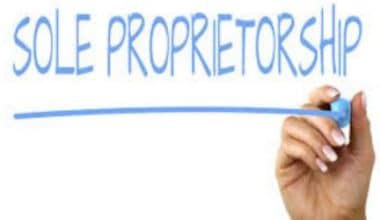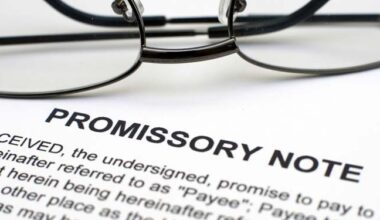Cold calling is one of the initiatives that firms use to contact potential leads and increase sales. While some people think it is illegal, cold calling proves to be one of the best methods for communicating with customers on a personal level. To that effect, learn how to reach your target audience with the cold calling tips in this article.
What Is Cold Calling?
Cold calling is a sales method in which sales representatives call potential consumers with whom they have never previously communicated in order to pique their interest in their product or service.
How Does Cold Calling Work?
Cold calling is a sales method in which a salesperson contacts people who have not previously demonstrated interest in the items or services being provided. Cold calling often refers to phone or telemarketing solicitation, but it can also include in-person contacts, such as with door-to-door solicitors.
Cold-call salespeople who are successful must be persistent and willing to face repeated rejection. They must fully prepare for success by examining the demographics of their prospects and the market. As a result, professions that rely largely on cold calling have a high attrition rate.
Cold Calling Examples
Brokers in the financial industry utilize cold calling to acquire new clients. Consider the film “Boiler Room,” in which a room of stockbrokers squeezed into cramped cubicles calls names from paper lists in the hopes of pitching them on esoteric stocks. Cold calling is portrayed as a numbers game in the film. Brokers are significantly more likely to receive rejections than acceptances. A cold call is rarely used by those who land lucrative transactions.
Some companies are well-known for their door-to-door service. Southwestern Advantage, a producer of educational books, hires largely college students to canvass residential neighborhoods. Similarly, Kirby Company dispatches salespeople to homes to market high-end vacuum cleaners.
Is Cold Calling Illegal?
Although cold calling may be tedious and annoying for certain customers, it is not illegal. However, tight laws govern when a corporation can and cannot call a consumer. For example, if a person has previously requested that your organization refrains from calling them, you must respect their desires.
Cold calling has its own set of rules.
Companies must follow certain laws and standards when cold calling consumers. Failure to obey these rules makes cold calling illegal. In actuality, TSR includes a number of requirements that firms must follow in order to be in compliance.
This includes stuff like:
- Time slots for calls
- Requirements for disclosure
- Transmissions of caller ID
- Misrepresentations are prohibited.
- Billing constraints
- Restrictions on pre-recorded messages
- Demands for upsells
This list only touches the surface of the numerous themes covered by TSR.
It’s worth noting that most B2B cold calling is free from TSR regulations. There are, however, several exceptions to be aware of.
Top 5 Rules to Remember
When it comes to cold calling, there are numerous legal restrictions and regulations. While your organization must be well-versed in every legislation or regulation that applies to your telemarketing activities, there are some basic guidelines that every cold caller must follow.
#1. You must first establish your identification.
Rather than jumping right into your sales pitch, make sure that all of your cold calling scripts start with an introduction. Legal cold calls must begin with a description of who you are and why you are calling. Callers must disclose the following information throughout the first two minutes:
- Name
- The company they represent
- The reason for their phone call
- If necessary, provide a phone number and/or address.
#2. Cold calling hours
Legal cold calling is permitted only between the hours of 8 a.m. and 9 p.m., seven days a week, outside of which it is illegal. This deadline, however, only applies if the call is not a current client or customer. If the consumer has stated that the caller may contact them at any time, the timeframe is also waived.
#3. Be aware of no-call lists.
A do not call (DNC) list is required for all security organizations, as well as many other sorts of enterprises. Cold callers must honor a customer’s DNC request if they sign up for one. Calling a DNC-registered consumer may result in a formal complaint being filed with the corporation, authorities, the state, and the Securities and Exchange Commission (SEC).
#4. Never accept money over the phone.
Customers are especially wary when providing financial information over the phone in the age of phone scams. If your cold call leads to money being removed from the customer’s (call recipient’s) bank account, you must obtain written authorization.
However, most customers are reluctant to divulge their banking information over the phone. Consumers have grown to assume that reputable businesses will have alternate, more secure methods of collecting money.
#5. Sincerity is expected.
The SEC expects all cold callers to be truthful. When it comes to cold calls, there is a tremendous difference between misleading marketing and smart marketing. Always tell the truth to call recipients.
When is the most effective time to make cold calls?
Let’s look at an example to answer this question. Every Monday, sales rep A calls a client and receives no response. Sales rep B, on the other hand, has been calling the same client every Wednesday. Sales rep B receives a confirmation for a demo meeting the following week.
Most of us now recognize that the only variable that varies is the weekday. You may believe that the day and time of the phone call are insignificant, but they are. Schedule cold calls between 4:00 and 6:00 p.m. on a Wednesday or Thursday. On a Monday, the worst time to call is between 6:00 a.m. and noon.
To excel at cold calling, you must have a lot of tenacity and patience. However, they also provide some of the greatest training for newly hired sales representatives.
4 Things to Consider When Making a Cold Call
You’re bound to make mistakes when making cold calls for the first time, and that’s okay. However, don’t walk in blindly since it’s your first time. Investigate some of the top cold call tips and tricks. The following are examples of must-do practices:
Use scripts, but remember to be yourself during these calls. There’s no need to seem robotic or as if you’re reading from a script; instead, be natural and confident.
Always pay attention. Even the most insignificant details can make or break your transaction.
If possible, offer solutions that address their individual issues. When compared to individualized products, generic products are less enticing.
Finally, keep a consistent track-on record of and follow-up on prospects.
The most important takeaway from this essay is to follow up until you’re certain it’s going nowhere. Prioritize leads, monitor their activity, and follow up on a regular basis. Cold calling entails cultivating leads and pressuring prospects to act quickly. And you’ll need a strategy to help you do it efficiently over time. Invest in CRM software that will assist you in qualifying, tracking, and engaging with leads.
Tips For Strategic Cold Calling
Here are some of the best cold calling tips to help you increase your sales:
#1. Conduct thorough research.
A pre-call ritual should include prospect research. Always begin your outreach plan with research.
You can deliver valuable calls and maintain their attention by gathering crucial information about them. Without conducting research, you appear selfish by demonstrating little interest in the person on the other end of the phone. Your prospects will appreciate the extra work put in with personalization and will be more open to improved dialogue as a result.
Pre-call research also allows you to approach the sales interaction with a clearer vision and a customized message from the start.
Examine their LinkedIn, company website, CRM (for any past engagement), social media, and so on.
#2. Make a rough outline of what you want to say.
Make a concise cold call script (30 seconds or less) that you may refer to while on the phone. The goal is not to read this word for word but rather to utilize it as a guide to help you deliver your message clearly and confidently.
You should properly answer the following questions in your cold call script:
- What is your name?
- Why are you calling me?
- How exactly do I benefit?
- What are you requesting?
Remember that the purpose of a cold call is not to pitch someone on the spot. You’re merely attempting to persuade them to meet at a later time.
#3. Spend 1-2 hours going over your call list.
Your main focus should be on your call list and script.
Anything else can be a distraction that keeps you from truly engaging with the person on the other end of the line.
#4. Determine the number of calls required to meet your objectives.
Determine how many cold calls you need to make in order to meet your monthly quota.
#5. Create a Powerful Opening Sentence
You just have ten seconds to show that you’re worth talking to, so set yourself out from other callers. After introducing yourself, shift your attention to your prospect by incorporating your research and customizing the phone call.
You may, for example, begin with a compliment on a recent professional accomplishment discovered through investigation.
Here are some powerful first sentences about your prospect, not you.
“I saw your ____ post.”
“I observed you are in charge of ___”
“I’m impressed by your work on ___.”
#6. Allow Rejection to Motivate You
Rejection causes emotional distress.
We can replay and experience social hurt more intensely than physical pain, so a terrible call might be discouraging.
The finest sales representatives maintain a cheerful attitude, pick up the phone and continue to learn from their failures.
#7. Perfection is attained via practice
Never go into a cold call entirely cold.
Simply practicing what you’re about to say increases confidence, which leads to improved performance. Before dialing, try practicing.
The more self-assured you grow, the easier cold calling will become.
#8. Get Over Call Reluctance
According to studies, call reluctance causes 80 percent of new salesmen to fail. It’s natural to feel nervous before a cold call, but with the correct precautions, you’ll be able to overcome it.
When you’re feeling nervous, do the following:
- Consider the positives: Regardless of the outcome, consider each call a learning experience. Learn from the negatives and celebrate the positives.
- Use essential oils: Select a perfume that evokes pleasant recollections. Essential oils can mislead your mind into thinking in a positive way.
- Examine a photograph of a loved one: Seeing someone you care about makes you happier, lowers pain, and makes you less prone to anxiety.
What is cold calling vs warm calling?
In sales, “warm calling” refers to making contact with potential customers who have already shown interest in what you have to offer. When making a warm call, you already know they’re interested in speaking with you, as opposed to making a cold call where you have no such guarantee.
Is cold calling a hard job?
Let’s be honest: making cold calls is difficult. Calling a complete stranger out of the blue, getting their attention, and then selling them on your product or service is a daunting task. And maintaining that level of effort over time is next to impossible. However, if you know what you’re doing with cold calling, it can be a very lucrative endeavor.
What is no cold calling?
A no-cold-calling zone is an area in which the locals have publicly stated that they will not tolerate salespeople knocking on their doors without an appointment. Unscrupulous businesspeople and scammers are deterred by “no cold calling” zones because they don’t want to be “logged” as operating in that geographic region.
How many cold calls a day is good?
At that rate, one makes around 60 daily cold calls. To put it another way, if you’re a sales rep who needs to get 10 qualified opportunities per week, you’ll need to make about 180 calls (18 attempts x 10 prospects). To put that in perspective, that equates to an average of 36 sales calls per business day.
Why are people afraid of cold calling?
You might be reluctant to make cold calls because of concerns about making a poor first impression on potential new business contacts. Calling strangers can be intimidating because many people become speechless when their intended recipient answers the phone.
Is cold calling a good idea?
Yes, running a cold email is a good idea. Despite the fact that cold calls don’t usually result in sales, they’re useful because they’re cheap, easy to track, and difficult to ignore compared to emails.
How late should you cold call?
The best times to make cold calls are between 9 a.m. and 4 p.m. when most prospects are at work and between 10 a.m. and 2 p.m. when response rates are highest.
What time should you not cold call?
The worst time to call prospects during business hours is around noon. Depending on their workday, the majority of prospects spend these hours dining with coworkers, taking a break, or obtaining much-needed concentration time.
In Conclusion,
Cold calling is an excellent way to broaden your horizons and get more reliable leads to improve sales for your organization. However, if utilized incorrectly, cold calling might lead you into an illegal territory and cost you tens of thousands of dollars.
Cold Calling FAQs
Why is it called cold calling?
It is called cold calling because the call is made cold, without any form of preparation or warmup.
What is the opposite of cold calling?
The opposite of cold calling is warm calling.
What is cold calling in HR?
In HR, cold calling often refers to making phone calls to people who are not expecting to hear from you about a job.






